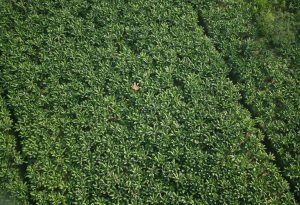ARTIST |
Raúl Corrales |
TITLE |
Caballería |
YEAR |
1960 |
ARTIST’S COUNTRY OF ORIGEN |
Cuba |
DIMENSIONS |
Variable |
MEDIUM |
Gelatin silver print |
Créditos: The Corrales Estate, Havana, Cuba. Courtesy The International Art Heritage Foundation
Raúl Corrales was Fidel Castro’s official portraitist between 1959 and 1961. However, unlike figures like Alberto Korda, whose work contributed to the glorifying of rebel leaders (think of the iconic portrait of Che Guevara), Corrales, in his photographs of the Cuban Revolution, focused on representing the people, especially those social groups to which the new revolutionary government promised equal opportunities: women, Afro-descendants and peasants. This photograph captures the moment in which a group of rebels on horseback belonging to the 26th of July Movement celebrate the expropriation of a plantation owned by the United Fruit Company. The riders are sporting straw hats and waving Cuban flags while smiling triumphantly, the image reminiscent of the grandiose military scenes of 18th and 19th century historical painting. This photograph, however, is actually a reenactment of an event that happened months before, during the first year of the Revolution. This practice was commonplace and its purpose was to commemorate the achievements of the recent Cuban Revolution with the aim of building a legendary narrative around the historical turn of events on the island. In this case, the importance of the event lay in the nationalisation of Cuba’s natural resources for the benefit of its people. Fidel Castro expropriated the United Fruit Company plantations in Cuba during the early stages of the revolution. After spending several decades trading bananas, the US company had started at the beginning of the 20th century to focus on the exploitation of sugar mills on the island. But Castro still remembered the role of the UFCO in the massacres against the workers of the banana plantations in Colombia, Costa Rica, Honduras and Nicaragua, and the collaboration of the company in the coup in Guatemala a few years previously, in 1951. As a gesture of solidarity with neighboring nations and being fully aware of the relationship (both material and symbolic) between raw materials and national sovereignty, the coup against UFCO was understood as a fundamental step towards the development of a revolutionary Cuba. In addition, the young revolutionaries in the image also commemorated a resounding victory in 1895 in the Cuban War of Independence against Spain, thus amplifying the emancipatory character of the image.



